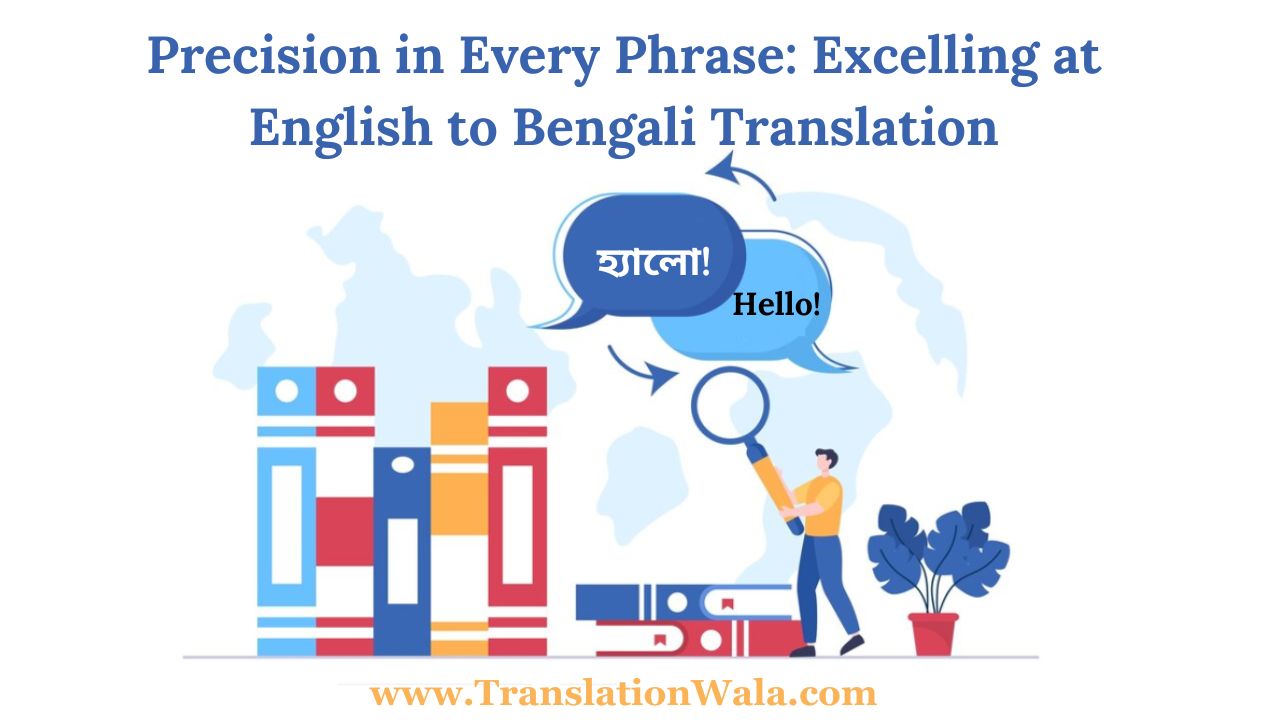Translation is a complex art form, a delicate ballet in which meaning and subtlety intersect across language borders. When it comes to English to Bengali translation, accuracy is key. Both English and Bengali have unique language subtleties, grammatical structures, and cultural idioms, making proper translation a difficult yet rewarding task.
This essay looks into the important tactics and factors for excelling at English to Bengali translation, ensuring that the original content and intended effect are accurately retained.
Understanding the Source: Nuances of English
A comprehensive investigation of the original English text is the foundation of a good translation. Go beyond the words and understand the author’s underlying meanings, tones, and stylistic choices. Here’s something to remember:
- Idioms and Colloquialisms: English is full with idiomatic terms (for example, “beat around the bush,” “kick the bucket”). Their literal translation generally yields incomprehensible Bengali words. Instead, find analogous Bengali idioms with similar meanings.
- Ambiguity and Wordplay: Recognize deliberate ambiguity, polysemy (several interpretations for the same word), and puns. Look for Bengali counterparts that keep the original’s fun spirit, or clarify the pun in the translation.
- Cultural References: Contextualize cultural allusions in the original material. A qualified translation may change the reference to a culturally appropriate Bengali counterpart or offer a short explanation for the intended audience.
Also Read: Making a Global Impact: The Importance of English to Gujarati Translation in the Digital Age
Capturing the Essence: The Art of Bengali Translation
With a detailed grasp of the source language, the next stage is to create the Bengali equivalent.
- Grammar and Syntax: Bengali grammar varies greatly from English. Pay particular attention to sentence patterns, verb conjugations, and word order to create natural, fluent Bengali prose that reflects the original’s tone.
- Vocabulary Selection: Bengali has a variety of terminology. Choose terms that correctly reflect the content of the original text, taking into account the register (formal vs. casual) and the intended audience.
- Bengali Idioms and Proverbs: Incorporate Bengali idioms and proverbs into your translation (“নাকে তেল দিয়ে ঘুমানো” – “sleeping soundly”). Using these well-known terms lends flavor and authenticity to your translation.
Beyond Words: Conveying Culture and Context
True translation quality requires a comprehensive approach that considers the cultural contexts of both languages.
- Formal vs. Informal: Bengali, like many languages, has variable degrees of formality. Match the tonality and register of the English text. Is the original scholarly or conversational? Reflect this in your Bengali translation by using proper wording and sentence structure.
- Cultural Sensitivity: Take cautious while using culturally particular phrases or notions. Be aware of any disparities in perception and seek Bengali equivalents that correctly express the desired message while avoiding misunderstanding or insult.
Tools and Techniques for Enhanced Accuracy
Technology and resources are very useful tools for English to Bengali translation.
- Bilingual Dictionaries and Glossaries: For precise translations and a broader vocabulary, use specialist dictionaries and topic glossaries.
- Machine Translation Tools: While machine translation should not be depended on entirely, it may serve as a starting point, especially for popular words and technical jargon. Always carefully review machine-translated output.
- Translation Memory Software: These tools save previously translated portions, which helps with consistency and saves time when dealing with repeated phrases.
Also Read: Marketing Materials with Cultural Resonance: English to Hindi Translation for Effective Advertising
The Human Touch: Proofreading and Revision
Thorough proofreading and revision are essential. Take a break from the translation and return with fresh eyes.
- Fluency and Naturalness: Read the Bengali translation aloud. Does it flow nicely, as if it were originally written in Bengali? If not, make modifications.
- Accuracy: Double-check that the translation accurately represents the meaning of the original English text.
- Consultation: Consider getting input from a native Bengali speaker, especially for delicate cultural allusions or difficult vocabulary.
In Conclusion
Mastering the English to Bengali translation demands perseverance, linguistic agility, and a thorough awareness of both languages and cultures.
By using these tactics, you will convert yourself into a translator who not only creates precise translations but also embodies the essence and strength of the Bengali language.
